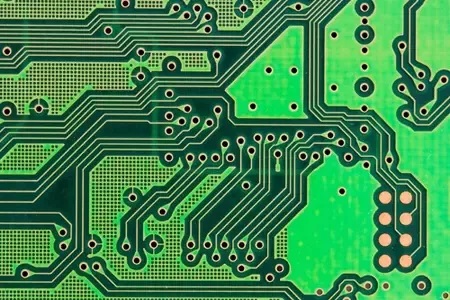PCB Ground Noise
By:PCBBUY 08/18/2021 17:25

What is ground noise of PCB? Ground noise has many names, including electrical interference and crosstalk. A circuit in a PCB depends on a certain current and voltage to work properly. This means that each circuit must have the right power, and that power must be routed to the right location. If there is an accidental connection between the circuits, it may cause the circuits to overflow in an unexpected way, resulting in ground noise.
In this article, we are going to talk about the this topic and if you want to learn more professional knowledge, please check and read the content we prepare for more information.
If you want to order PCB product, please check and custom your order online.

What are the basic rules of PCB ground?
Always provide a common ground point
An electronics system, whether that’s a single or a multi-board system, needs a single point for all grounds to come together. This might be the metal frame on a chassis or a dedicated ground layer on your PCB. You’ll commonly hear this referred to this common ground point as star grounding.
Leave nothing unattached
Nothing should remain unattached on your PCB layout. If there’s an open space on your board, fill it with copper and vias to connect with your ground plane. This will create a structured path for all of your signals to efficiently get to ground.
Never slice up your ground layer
Most engineers working on four layer boards will have a dedicated ground layer. This works great as long as you don’t route traces on this layer. Once you do, you’ve effectively created a ground current loop. Keep your ground layer whole at all times.
Why to solve PCB ground noise?
PCB functionality depends on many different factors, including physical layout, materials used, and stress on components over time. Electrical interference between PCB components, also known as ground noise, can have a wide range of undesirable consequences during a PCB’s operation. These issues include loss of signal integrity, unexpected thermal variations, and component failures. Therefore, reducing ground noise is a primary concern for PCB designers.
· Ground noise is a blanket term for many types of signal interference that can occur on a PCB and all of those interference types can affect how a PCB works.
· Ground noise can create signal integrity problems and performance problems that can eventually cause PCB failures.
· A strategy for creating PCBs with a new type of substrate and copper connectors can dramatically reduce the amount of noise and electrical crosstalk.
How to reduce PCB ground noise?
Analyzing Ground Noise
Analysis of ground noise is the key to ensure the normal operation of PCB, especially for high-speed PCB. While complex PCB with many circuits are more prone to noise, even simple circuit layouts can produce noise if they are not designed correctly. PCB design software uses noise data to provide designers with specific measures of how much ground noise a PCB produces. Noise maps show how much ground noise comes from different sources, such as unintentional connections between traces or thermal noise.
PCB layout and energy requirements often mean that different PCBS have different noise sources. For example, long traces are more likely to have unexpected connections, and high-power PCBS are more likely to have thermal problems. Reducing ground noise to 0 is impossible, as there is always some noise from the intended source, but it can be minimized.
1. Be sure to provide a separate ground connection for each ground pin directly to the ground plane. Connecting 2 ground terminals together with a trace to a single via defeats the purpose of having independent ground leads on the device package!
2. Main parts of select component package: use devices with a ground reference in the center of the device to reduce the Lgnd (4nH vs 15nH). SM devices are preferred over through hole packages for this reason.
3. One of the best ways to eliminate GND bounce problem is having many GND pins in the chip packaging. Chips where multiple GND pins used, each GND pin should have a direct path to GND plane.
4. Connecting more than 1 GND together & then running them through a trace to GND does not make use of having independent GND leads.
5. Double clocking of flip-flops can happen when output switching currents flow through a GND pin causing GND bounce.
6. Filtering method & bypassing are the most frequent ways of reducing the power supply noise. Placing a large tantalum capacitor connected to the source eliminates power supply ripple & current surges.
7. For HF ripple elimination, small capacitor (0.1mF) on every Vdd of clock generator significantly reduces the HF ripples. To eliminate the noise coupling effect, no HF signals should be routed around/under the clock generator.
Industry Category











